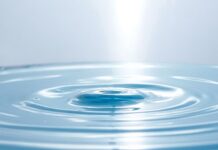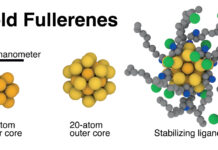
A color developed by Egyptians thousands of years ago has a modern-day application as well – the pigment can boost energy efficiency by cooling rooftops and walls, and could also enable solar generation of electricity via windows.
Egyptian blue, derived from calcium copper silicate, was routinely used on ancient depictions of gods and royalty. Previous studies have shown that when Egyptian blue absorbs visible light, it then emits light in the near-infrared range. Now a team led by researchers at the Department of Energy’s Lawrence Berkeley National Laboratory (Berkeley Lab) has confirmed the pigment’s fluorescence can be 10 times stronger than previously thought.
Measuring the temperature of surfaces coated in Egyptian blue and related compounds while they are exposed to sunlight, Berkeley Lab researchers found the fluorescent blues can emit nearly 100 percent as many photons as they absorb. The energy efficiency of the emission process is up to 70 percent (the infrared photons carry less energy than visible photons).
The finding adds to insights about which colors are most effective for cooling rooftops and facades in sunny climates. Though white is the most conventional and effective choice for keeping a building cool by reflecting sunlight and reducing energy use for air conditioning, building owners often require non-white colors for aesthetic reasons. For example, bright-white asphalt shingles are almost never used on sloping residential roofs.
Read more: Ancient pigment can boost energy efficiency
Image courtesy of lbl.gov
Related Links:
Researchers tune material’s color and thermal properties separately
Stickers transform the human body into a multi-touch surface
Imaging technique unlocks the secrets of 17th century artists











